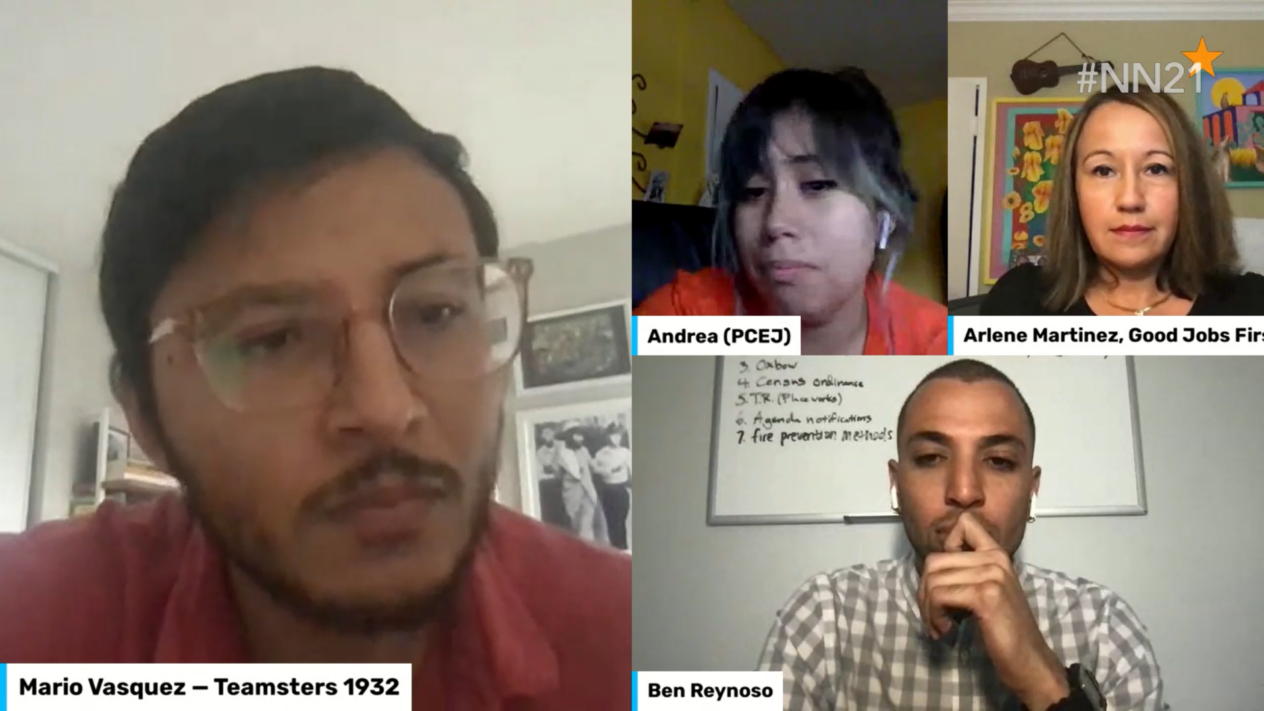News
At Netroots, Panel Says Workers, Neighbors Together Must Fight Amazon

Global e-commerce giant Amazon targets disadvantaged jurisdictions to build its facilities using tax breaks that create poorly-paid jobs and pollute the air in the many communities of color where they are located, elected officials and pro-labor activists said.
Speaking at the Netroots Nation conference held virtually earlier this month, authorities participating in a Teamster-sponsored panel looking at Amazon’s negative effect on communities said local governments should not be trading scarce tax dollars for low-paying jobs that treat workers poorly and harm the quality of life in surrounding neighborhoods with constant traffic and exhaust coming from company-used vehicles.
“Amazon should not get a single dollar more in subsidies. It should be paying communities for all the destruction it brings,” said Arlene Martinez, communications director at Good Jobs First. “You could go on-and-on about all the issues with Amazon.”
Increasingly, communities targeted by Amazon are rising up to demand more from the company. Ben Reynoso, a community organizer turned San Bernardino, Calif. city councilmember, canvassed neighborhoods, with allies like Teamsters Local 1932 and other social justice organizations, to notify city residents about Amazon’s plan to develop a major air cargo facility at the nearby public airport. The development was projected to exponentially increase air and truck traffic, as well as pollution and noise, with little in return for workers and communities that would face these issues most intensely. Amazon’s standard of high turnover, high injury rates, and low pay would not be enough to satisfy the serious community concerns that organizers learned about through door knocking all around the airport.
Together, residents demanded that Amazon sign a community benefit agreement (CBA) to guarantee better pay, benefits, working conditions, as well as pollution mitigation at the proposed air cargo hub. The facility is currently the subject of litigation by the State of California over environmental review failures.
“We unified labor, environmental justice and social justice in one room, fighting for good jobs and clean air,” Reynoso said, adding, “What we have in a community like this is an undying thirst for equality. We are going to fight until we get there.”
The fight for the use of CBAs to govern development by Amazon is not limited to San Bernardino, however. Similar efforts are currently playing out in Chicago, Memphis, Newark, N.J. and San Diego, among others. And other locations would be wise to do the same unless they want to be latest jurisdiction to be trampled on by Amazon, said Andrea Vidaurre, policy lead for the Peoples Collective for Environmental Justice.
“This is not just happening in the Inland Empire. This is part of Amazon’s business model,” she said. “We can see it throughout Amazon’s footprint in the country and throughout the world.”
Mario Vasquez, Local 1932’s communications coordinator, said that is why the union is ramping up its efforts to challenge Amazon, as it voted to do during its 30th International Convention in June.
“The industries across the country and the world will see degradation of standards because of Amazon,” he said. “What I’m so proud of is members throughout the country joining with their communities and members to say we can do something different.”
Martinez said efforts to fight the global behemoth will require workers, communities and activists all to come together to build strength together.
Amazon, she stated, “is ruthless. We have to be ruthless in fighting it too.”